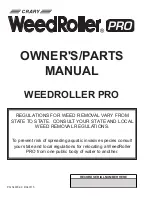
73
Use the test leads or probes supplied with the product, or compatible terminals. Inspect
the test leads or probes for damage before use.
When using probes, keep fingers behind the finger guards on the probes.
Use the supplied replacement fuses or specified replacement parts.
Always consider electrical and electronic equipment to be energized (live). Never
assume any equipment is de-energized.
When making electrical connections, connect the common test lead before connecting
the live test lead; when disconnecting, disconnect the live test lead before disconnecting
the common test lead.
When measuring current, turn off circuit power before connecting the multimeter to the
circuit. Remember to place the multimeter in series with the circuit.
After current measurement is finished, turn off the power to the circuit before removing
the test leads and before reconnecting any disconnected wires or devices.
Do not add voltage to the input terminal when measuring resistance.
To avoid electric shock, turn off the power to the component before connecting.
To prevent damage, always use and store your multimeter in appropriate environments.
Do not use in wet or damp conditions or around explosive gas or vapor.
Do not tamper with or disassemble the multimeter, connectors or accessories. Internal
damage will affect performance.
Before carrying out maintenance and cleaning of the multimeter, make sure the unit is
NOT connected to a power source, vehicle or computer.
When cleaning the multimeter, use a damp, soft cloth with mild detergent. Do not allow
water to enter the multimeter casing.
11.2 Connecting the Multimeter
Plug the red test lead into the red color coded input of the multimeter, and the black test
lead into the black input.
















































